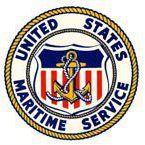The bayonet you pictured above is a Japanese Type Year 30 Bayonet made by Matsushita Metal Co., Ltd., 松下金属株式會社. It is from the 39th series, ㋴90221, and is a variation C, JB-35. The final inspection mark is that used by Ōsaka Arsenal, 阪. The entire 39th series was made by Matsushita even though some only have the Kokura Arsenal symbol on the riccaso. Matsushita began Type Year 30 Bayonet production in 1939 and made bayonets until the end of the war. Thanks for sharing your bayonet pictures.


